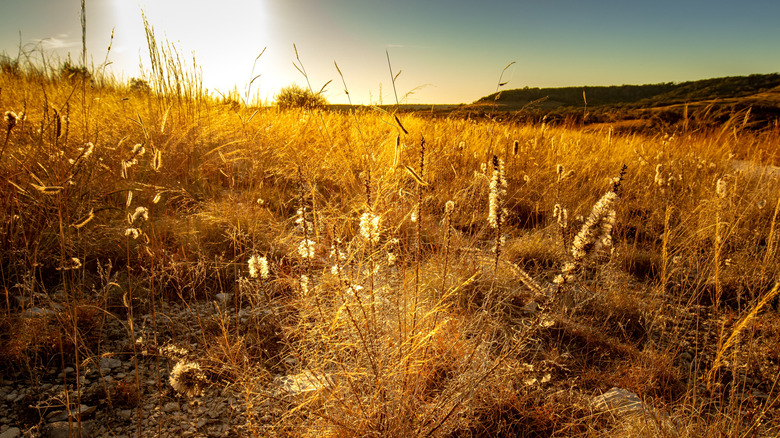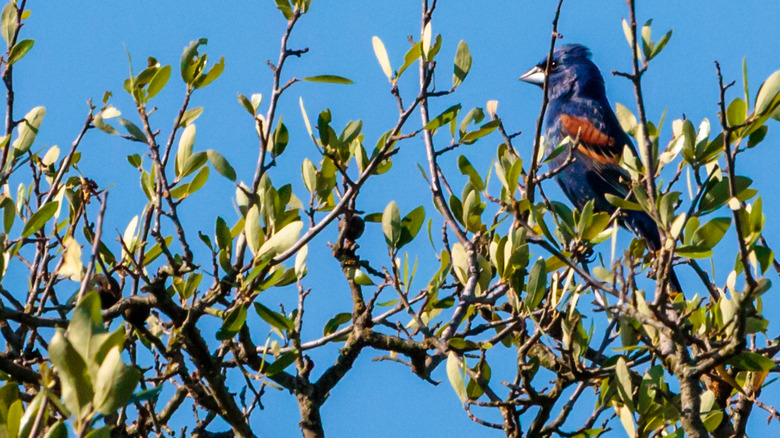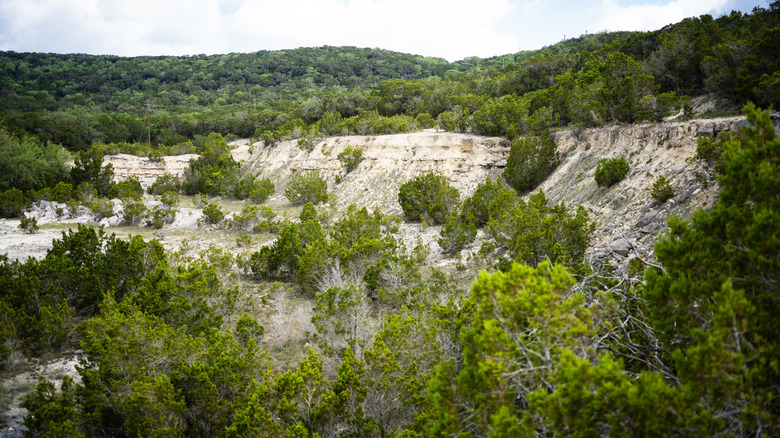Texas' Great Plains And Gulf Coast Bioregions Combine At This Underrated Wildlife Refuge
As the second largest state in the US, Texas has a wide range of ecosystems. The Lone Star State is situated in the massive Midwest Great Plains region, but also has over 300 hundred miles of ocean coastline. This number gets even longer when you factor in estuaries and other aquatic formations that shape the Texas Gulf Coast. The perfect way to combine the varying landscapes of Texas is a visit to Balcones Canyonlands National Wildlife Refuge.
Texas' wide open spaces might be more associated with farmland, but its nature is still impressive even in spaces close to major cities. In fact, Balcones Canyonlands National Wildlife Refuge is less than an hour from downtown Austin. Its proximity to major highways like Interstate 35 and State Highway 183 make this wildlife refuge an excellent addition to a road trip with all the hidden gems Texas has to offer. You can hike, picnic, and take your pick from luxurious lodging options to make for an amazing Balcones Canyonlands National Wildlife Refuge trip.
Balcones Canyonlands began as a place for bird conservation
After realizing the threat of habitat loss for golden-cheeked warblers and other Texas songbirds, the U.S. Fish and Wildlife Service designated the Balcones Canyonlands National Wildlife Refuge in 1992. This pristine Texas destination for birding has become even more important, as Austin has grown consistently since. In total, 245 types of birds from doves to storks and pelicans live here. The American Bird Conservancy considers the refuge to be a Globally Important Bird Area. Around one third of all U.S. bird species facing population threats live at Balcones Canyonlands National Wildlife Refuge or at least pass by when migrating.
The added bonus to creating a protected space for these birds is the beautiful plant life that comes with it. Juniper and American Sycamore trees dot the land along with cacti like Texas Pricklypear. Spring is an especially good time to visit, as it brings wildflowers along. Try to spot bluebonnets, and Indian Paintbrushes. The popular hiking trails that show off these flowers are the RimRock and Indiangrass trails in the northern part of the refuge. Both are around 1.5 mile loops.
Find more rugged terrain along Quarry Canyon Trail
To put the canyon in Balcones Canyonlands National Wildlife Refuge, hike along the rocky terrain of Quarry Canyon Trail. This 0.6 mile out and back trail is in the Warbler Vista part of the refuge and is fairly rugged, but you'll be rewarded with views of the land. Within the refuge, you might see deer, lizards, and other forms of wildlife aside from the aforementioned plethora of birds. You can get great views with much less hiking at the nearby Sunset Deck, accessible from Warbler Vista Road.
Stay overnight among the central Texas nature at Missing Hotel, a hotel designed for guests to find tranquility and rejuvenation. Completely disconnecting from the outside world is strongly encouraged when you stay here. Balcones Canyonlands National Wildlife Refuge is perfect for families, but it can also be a part of a couples retreat for glampers. Check out the adults only Safari for the Soul Luxury Glamping near the refuge. Enjoy a massage during your stay or do some stargazing here. On The Rocks Glamping Resort with relaxing outdoor soaking tubs is another highly reviewed option not reserved only for adults.


